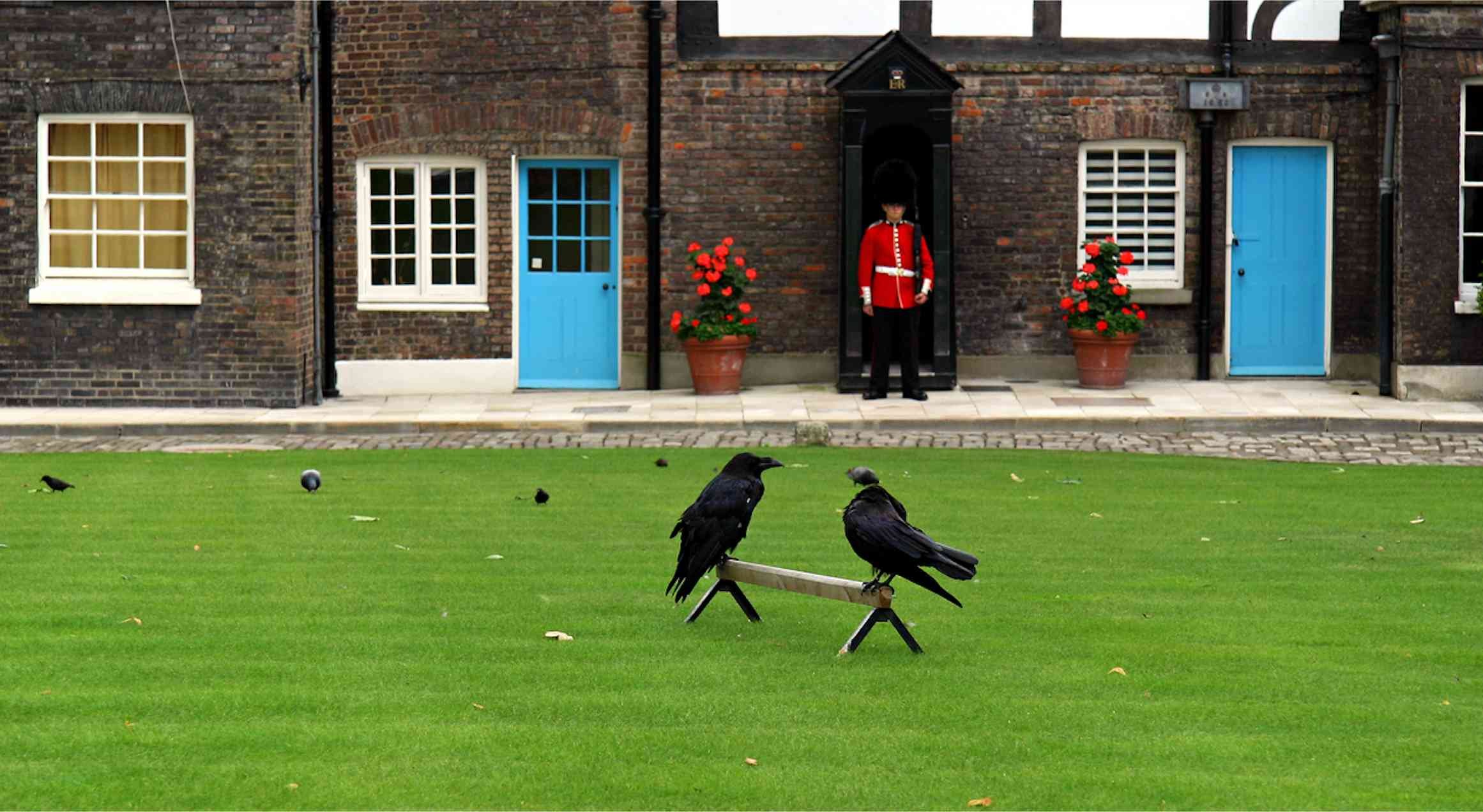Ravens
CREDIT: AI generated image.
Ravens are often viewed negatively: connected to fear, death, demons, superstition—things dark and ominous (think Hitchcock’s The Birds or Poe’s “The Raven”). Possible reasons given include their funereal all-black plumage, their deep, croaking call, their imposing size (twice the size of crows), and their feeding on carrion. Often considered symbols of bad luck or vice, in some cultures they have even been thought of as mediators between life and death. They have long been recognized as intelligent (ranking just below primates and dolphins), but less well known is that ravens are also playful—indeed, one of the most playful of all species.
Researchers have given considerable attention in recent years to animal play—coming up with five criteria for determining whether some action is actually play rather than just humans anthropomorphizing: the behavior needs to be repeated, contain non-functional elements, be pleasant or rewarding, be a sillier version of more serious behavior, and be initiated when the animal is unstressed, relaxed. Several raven activities meet all five criteria (and, indeed, this side of ravens was recognized centuries ago by cultures that saw them as tricksters).
Ravens have been observed to repeatedly drop sticks and then dive to catch them midair, slide down snowy roofs, tug at a cat’s tail, play “chase me” with dogs, do somersaults in air, fly upside down, and much more. This brief video shows the raven version of sledding. It makes sense that animals have evolved with the ability to engage in play. Humans play, researchers say, in order to develop skills like learning how to cooperate and to innovate, as well as to better understand how the physical rules of the world work. So it’s not surprising that animals too have evolved with the capacity to learn such skills through play.
One notable admirer of ravens was Charles Dickens. The first of three he kept as a pet—“Grip”—quickly impressed him with the “superiority of his genius” as well as his play, which included pecking at his daughters’ heels (less appreciated by them). Anecdotes about Grip, including some of the sayings he liked to repeat (“Halloa, halloa, halloa! What’s the matter here! Keep up your spirits. Never say die. Bow wow wow. I’m a devil, I’m a devil, I'm a devil. Hurrah!”) appeared in Dickens’ stories. And he even had Grip preserved after he died so he could continue to look over his shoulder as he wrote, which is where Grip remained for the rest of Dickens’ life.
Ravens also charmed another writer, Truman Capote, who captured his raven’s personality in these terms—claiming that Lola would hide items behind his copy of The Complete Jane Austen, including a “purloined denture…the long-lost keys to my car…a mass of paper money…old letters, my best cuff links, rubber bands, yards of string” and “the first page of a short story I’d stopped writing because I couldn’t find the first page.” Raven playfulness is prime example of animal sentience, deepening our respect for all living creatures.
Ravens at the Tower of London. According to legend going back to the time of Charles II, the Crown and Britain would fall if ravens ever left the Tower, so they have resided there continuously for hundreds of years. The only exception was a brief time after the end of WWII, and, interestingly, their absence was soon followed by several countries
leaving the British Empire. Hmm…


